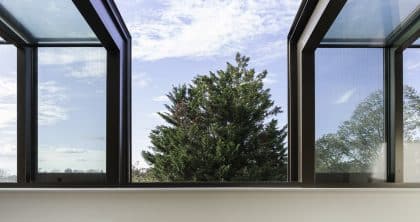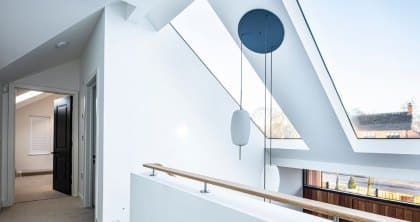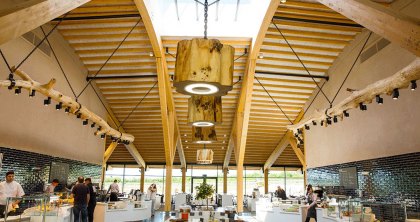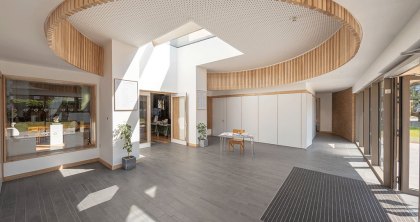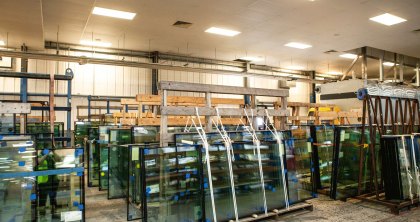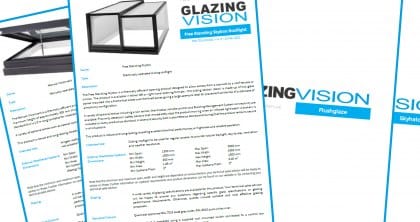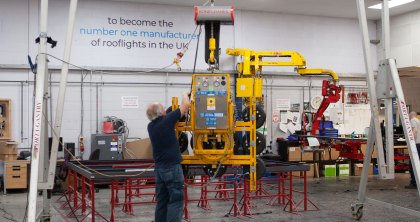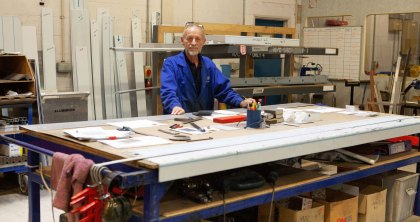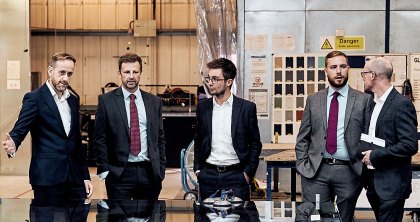Posted on June 23, 2023 in News, Sustainability
As part of our Corporate Social Responsibility, Glazing Vision have a duty to contribute to sustainable development and act as responsible corporate citizens.
Greenhouse Gas Emissions (GHG) are required to be calculated using the DEFRA calculations. The targets we set out to achieve, regarding energy consumption or GHG emissions, have been set internally; all this voluntarily in a bid to demonstrate improvement and reduce emissions.
Glazing Vision has made significant strides towards energy-saving and greenhouse gas emission reductions in recent years. Learn more about our commitment to renewable energy, its initiatives to reduce energy consumption, and the positive results we have achieved so far below.
Our Commitment
Glazing Vision’s commitment to renewable energy commenced in 2016 with the installation of a solar array on our roof which generates 179,130 kWh annually. This forward-thinking approach set the foundation for the company’s sustainable practices!
In 2020, we committed to calculating Scope 1 and 2 greenhouse gas (GHG) emissions in a desire to demonstrate continual improvements for ISO 14001 accreditation. Calculating Scope 1 and 2 greenhouse gas emissions involves identifying and quantifying the direct and indirect emissions associated with our business’s operations:
Scope 1 emissions are direct GHG emissions from sources that are owned or controlled by Glazing Vision. Examples of this includes emissions from activities such as:
a) Combustion of fossil fuels: Emissions resulting from burning fossil fuels on-site, such as natural gas for heating or diesel fuel for generators or company vehicles
b) Industrial processes: Emissions from manufacturing processes that release GHGs, such as emissions from the use of different gases.
c) Company-owned vehicles: Emissions from vehicles owned or leased by the company, including cars, vans, or industrial machinery.
To calculate Scope 1 emissions, we are collecting data on fuel consumption, activity levels, and emission factors (e.g., CO2 emissions per unit of fuel burned) which can then be multiplied to determine the total emissions.
Scope 2 emissions are indirect GHG emissions associated with the generation of purchased electricity, heating, or cooling consumed by us as a company. These emissions occur at the source of electricity generation, not at our premises. Calculating Scope 2 emissions typically involves:
a) Identifying energy consumption: Determine the amount of electricity, heat, or steam purchased or consumed.
b) Emission factors: Obtain the omissions factor specific to the electricity or energy consumed. This factor reflects the average emissions intensity of the electricity grid or the specific source of energy.
c) Calculation: Multiply the energy consumption by the appropriate emission factor to determine the Scope 2 emissions.
By calculating both Scope 1 and Scope 2 emissions, we are able to gain insights into our direct and indirect emissions and identify areas for reduction and improvement. This data is forming the foundation for developing carbon reduction strategies and reporting on GHG emissions.
Understanding Energy Consumption and Reduction Efforts
Building on the fledgling emissions data, in May 2021 Glazing Vision embarked on a comprehensive analysis of its energy consumption to identify areas for improvement. A change in electricity supplier provided real-time smart metering and usage data which highlighted where to focus our energy saving efforts.
Starting from September 2021, Glazing Vision launched a program of energy-saving activities. These included the installation of LED replacement lighting, the use of timer switches, and sensor lighting. By February 2022, with a change in world politics and considerable increases in fuel costs triggered by the energy crisis, Glazing Vision were seeing positive results of a continued and sustained reduction in energy consumption. The positive side-effects of which being a reduction in greenhouse gas emissions and reduction in cost.
Achievements
The Base Year on which reductions are calculated is Financial Year 2021/2022. However, it was apparent when commencing calculation of greenhouse gas emissions that considerable savings on the prior year were already being achieved, although only partial data was available. The 2-year savings are shown below:

To date, the company has achieved fantastic reductions in consumption (as seen by the charts above), with the associated combined greenhouse gas emission reductions now standing at 42 tonnes CO2e (tCO2e) from electricity and 35.93 tCO2e from gas over a 2-year period. That’s an energy saving equivalent of boiling a kettle 1,747,521 times!
In the last 12-month period, reductions are seen largely in both Scope 1 and 2 emissions as a result of the energy savings achieved totalling 40.75 tCO2e. Scope 1 emissions are now under 50 tCO2e for the year, 2 years in advance of the target set to be achieved by the end of April 2025.

Glazing Vision’s unwavering commitment to renewable energy, thorough analysis of energy consumption, and effective implementation of energy-saving measures have yielded remarkable results in reducing greenhouse gas emissions and achieving cost savings. As a frontrunner in the rooflights industry, Glazing Vision sets an inspiring example for architects and homeowners, emphasising the importance of energy efficiency and environmental responsibility.
Furthermore, Glazing Vision’s impact extends beyond its own operations. By offering innovative and energy-efficient rooflights, we empower our customers to save energy and reduce their environmental footprint. These rooflights not only enhance the aesthetics and functionality of buildings but also allow natural light to illuminate spaces, reducing the need for artificial lighting and decreasing energy consumption.
Through our comprehensive approach to sustainability, Glazing Vision exemplifies how businesses can lead the way in driving positive change. By prioritising renewable energy, optimising energy usage, and inspiring customers to embrace energy-saving solutions, we demonstrate our dedication to creating a greener future for both the industry and the planet.
Architects and homeowners can look to Glazing Vision as a trusted partner in their sustainable building projects, knowing that they are not only investing in high-quality products but also contributing to a more energy-efficient and environmentally conscious world!
To learn more about our sustainability efforts or how you can make your project more energy efficient please get in touch, we’re happy to help!


